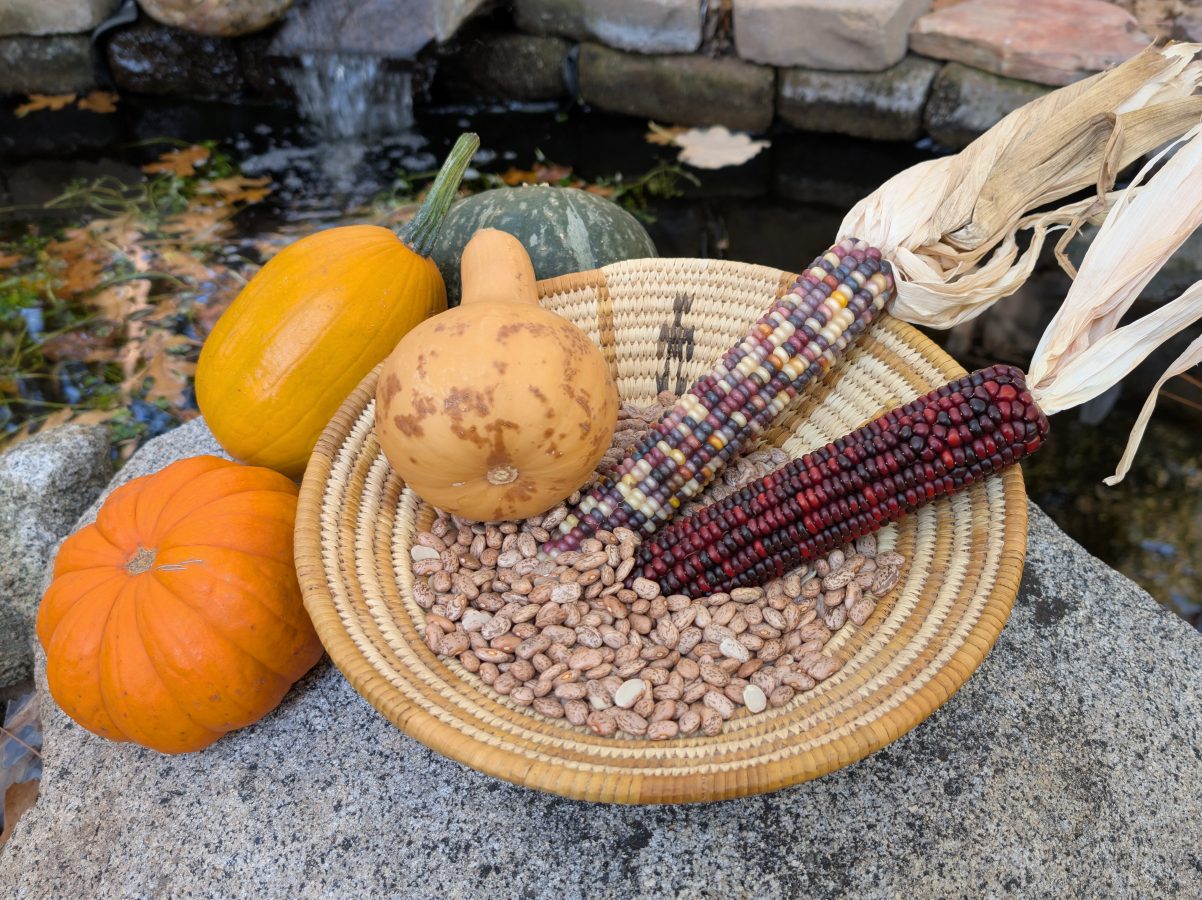

Native Americans tell a story of three sisters living together in a field. The little sister, dressed all in green, was so weak she could only crawl. The second sister, dressed in bright yellow, was always running off to find sunshine. The third sister was older and stood straight and tall. She wrapped herself with a green shawl and had long blonde hair that blew freely in the breeze. This Native American folk lore passes gardening knowledge from one generation to the next.
It is quite possible that pilgrims met the three sisters at the first thanksgiving they shared with the Wampanoag tribe, who welcomed them into the new world. The little sister who can only crawl is a bean plant which has to be staked up or it just “crawls” along the ground. The second sister is squash, which is a broad-leaved plant. It runs everywhere, seeking sunlight. The final sister is maize (or corn, as we know it), which stands strong and tall with its blonde tassels waving in the wind.
Many gardeners today think of the three sisters as green beans, zucchini and sweet corn. But this misses the true wisdom of this story. These varieties are summertime treats, but with the first frost become memories. The Three Sisters are stalwart friends that stay with us even through harsh winter storms: dried beans, winter squash and pumpkins, and dried corn. The pilgrims would have been totally unfamiliar with both corn and squash, as these are native to the Americas. And while dried beans were grown as early as in Mesopotamian cultures, a large number of important commercial varieties are native to the Americas. Turkey, pumpkin pie and cornbread dressing are all things I am thankful for every Thanksgiving and are gifts that the Americas and Native American culture gave to the world.
It is a deceptively simple story, but there is a whole lot of horticultural know how in these few words. The First Americans planted the sisters on mounds, three or four feet apart. The eldest, corn, was planted first, five to seven seeds per mound. It is allowed to grow six inches to a foot before planting squash and beans. These can be planted at the same time. Plant five or six bean seeds around the corn plants. Then, plant the squash or pumpkin seeds in about every fifth mound. If planted in every mound, they will quickly overwhelm the whole garden.
Here is where true wisdom begins. This is what we now call companion planting. The beans are nitrogen fixing, absorbing nitrogen from the air and making it available in the soil. This fertilizes the corn whose strong stalks support the beans as they reach for the sun. The broad leaves of the squash plants shade the ground, slow the evaporation of water from the soil, and help reduce weeds, benefitting all three plants. By planting these sisters together, the fields did not wear out as quickly over time, a lesson cruelly taught by the dustbowls of the nineteen thirties.
Starvation was a difficult reality in the early colonies. Many European plant varieties did not thrive in this new world. The Three Sisters not only nourished Native Americans through the winter, they were also adopted by the colonists and began to support them as well. This Thanksgiving remember to give thanks to the Three Sisters and our Native American sisters before you take a huge bite from that pumpkin pie.
Jim Bliss is a University of California Cooperative Extension Master Gardener of Tuolumne County.








